Choosing the perfect watermelon can elevate your summer picnics, family gatherings, or even a simple afternoon snack to a whole new level. Yet, many people find themselves puzzled when faced with a pile of watermelons at the store. Questions like, “Is this one ripe enough?” or “Will it be sweet?” often cloud their minds. The stakes are high; a poor choice can lead to a bland, unenjoyable experience. The goal of today’s article is to demystify the art and science of selecting the ideal watermelon. This post will walk you through various types of watermelons, where to buy them, the importance of seasonality, and much more!
Contents
The Different Types Of Watermelons
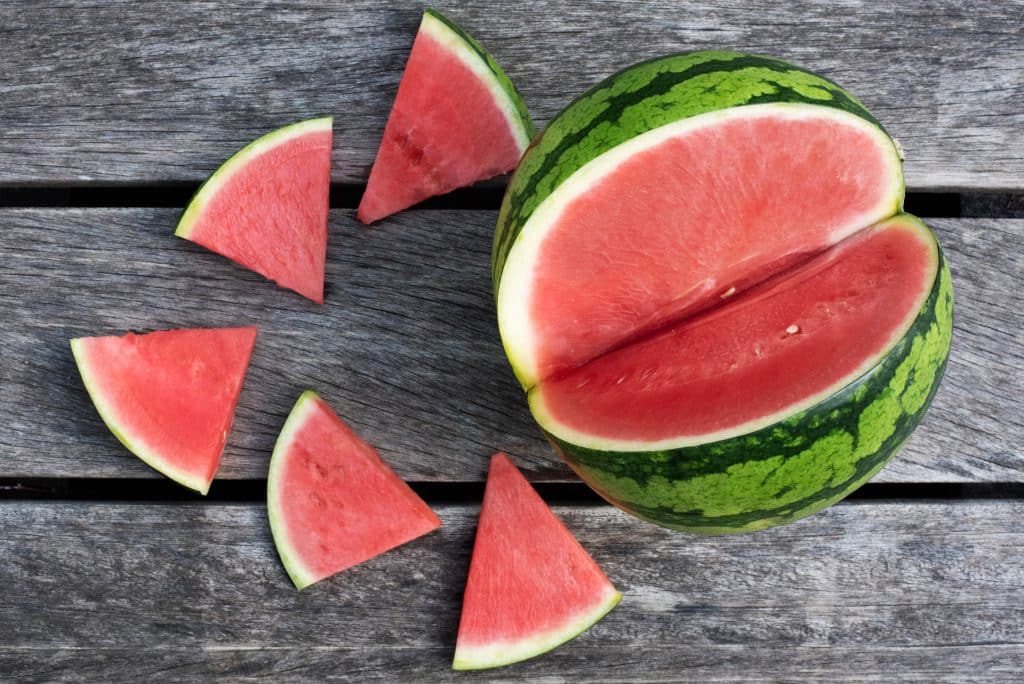
When it comes to watermelons, one size doesn’t fit all. There are several types of watermelons, each with its own set of characteristics and flavors. Seedless watermelons, for instance, are bred for convenience and are generally sweeter than their seeded counterparts. They are perfect for those who prefer not to deal with the hassle of seeds. On the other hand, seeded watermelons offer a more traditional experience. They are often larger and can be slightly less sweet, but many people believe they offer a richer, more authentic watermelon flavor.
Mini watermelons are another option that has gained popularity in recent years. These are ideal for small families or individuals, as they offer the same juicy experience but in a more manageable size. Then there are the yellow and orange watermelons, which are visually striking and offer a unique, often sweeter, and more honeyed taste. Knowing the differences between these types can help you make an informed decision based on your specific needs and preferences.
Where To Buy Your Watermelon
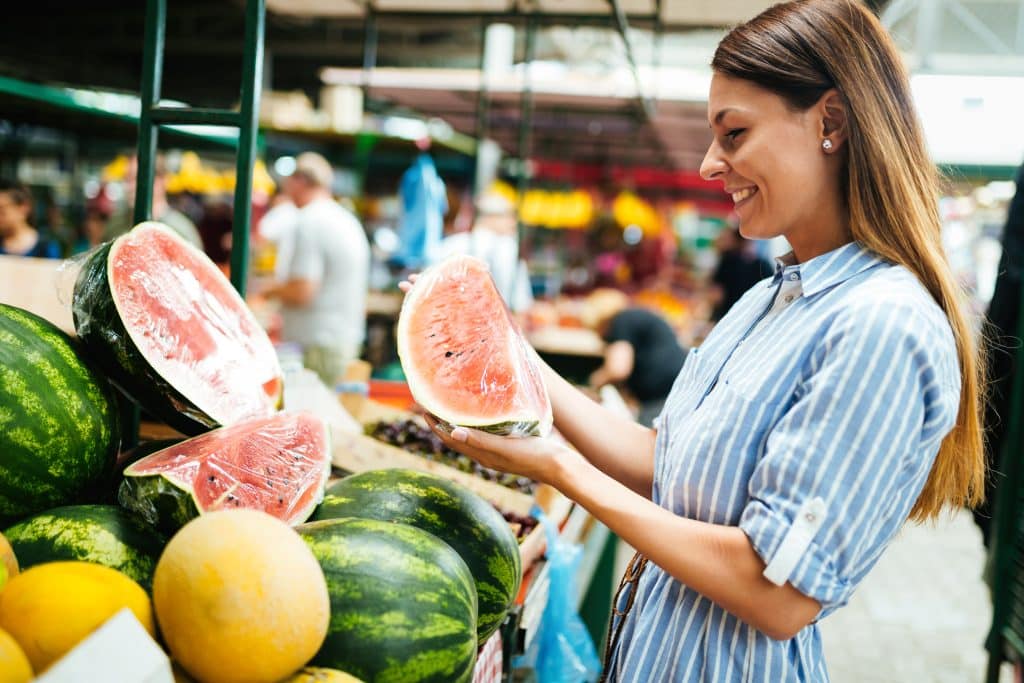
The place where you buy your watermelon can significantly impact its quality. Supermarkets are the most convenient option for many people. They offer a wide variety of choices, and the watermelons are often pre-sorted by quality. However, the downside is that these watermelons may have been stored for an extended period, which could affect their freshness. Farmers’ markets, on the other hand, offer locally sourced options that are usually fresher and may be grown with fewer pesticides. The trade-off is that the selection may be limited, and you might have to visit multiple vendors to find the perfect one.
Online stores are another avenue to explore, especially if you’re looking for a specific type of watermelon that’s not readily available in your local stores. The advantage here is the convenience of home delivery and the ability to read customer reviews before making a purchase. However, buying a watermelon online means you give up the opportunity to use tactile and sensory cues, like touch and smell, to judge its quality. Therefore, it’s crucial to buy from reputable online stores that offer quality guarantees.
The Importance Of Seasonality
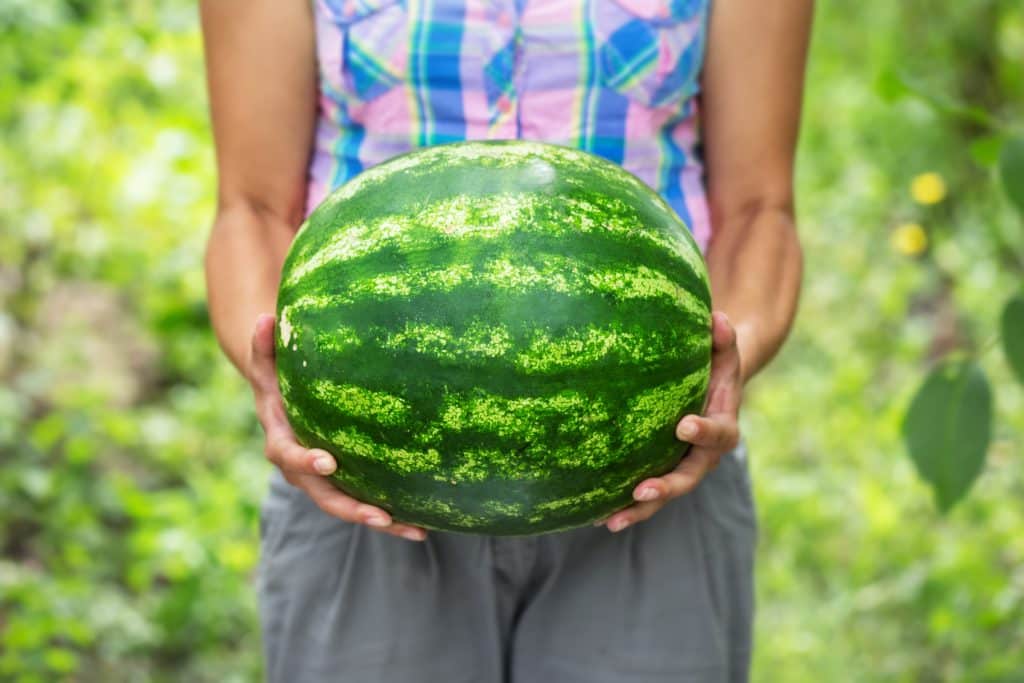
When it comes to fruits, timing is everything. Watermelons are no exception. They are best enjoyed during their peak season, which typically runs from late spring to early fall. During this time, watermelons are at their juiciest, sweetest, and most flavorful. Buying in-season produce not only ensures better taste but also supports local farmers who harvest the fruit at its peak. Off-season watermelons are usually imported and may have been harvested before they are fully ripe, affecting their taste and texture.
If you find yourself craving watermelon outside of its peak season, don’t despair. Many supermarkets offer imported options year-round. While these may not match the taste of a peak-season, locally-grown watermelon, they can still be quite enjoyable. Look for watermelons that are heavy for their size and have a uniform color, as these are usually good indicators of quality, regardless of the season.
Visual Inspection
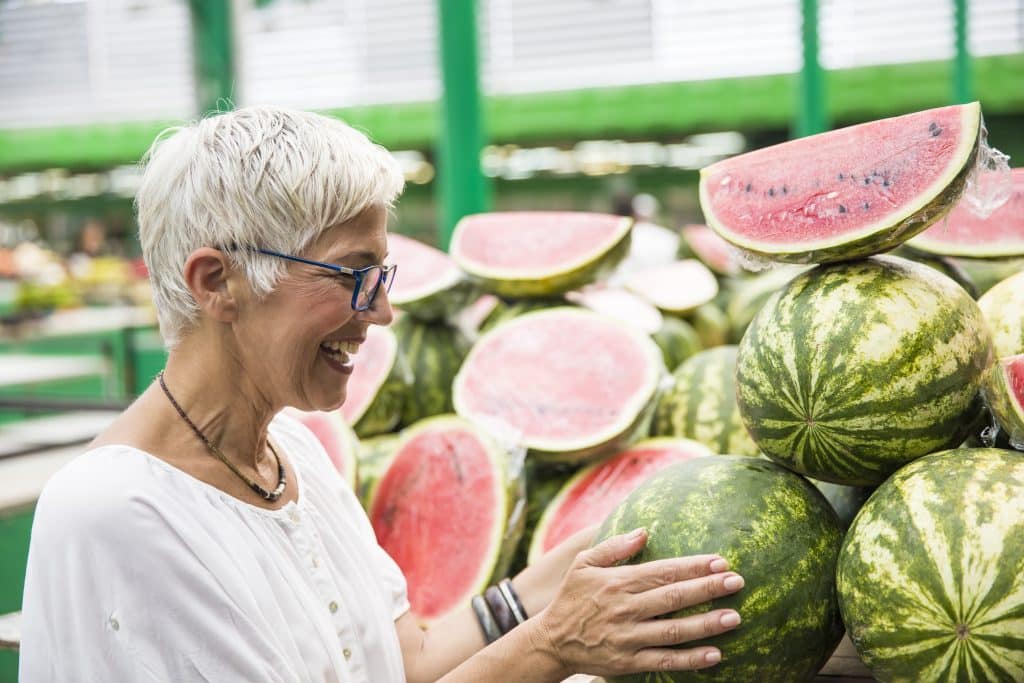
The first thing most people do when choosing a watermelon is to look at it. Visual cues can tell you a lot about the fruit’s internal quality. A watermelon should be symmetrical and free from irregular bumps or flat sides, as these can indicate that it grew unevenly, possibly due to inconsistent watering or sunlight. The color should be uniform, with a healthy green hue, as color variations can indicate ripeness issues or even disease.
Another crucial visual indicator is the sugar spot, the area where the watermelon rested on the ground. This spot should be creamy yellow, indicating that the watermelon is ripe and has sufficient time to sweeten on the vine. A white or greenish sugar spot often means the watermelon was harvested too early and may not be as sweet or flavorful as it should be.
The Art Of The Tap
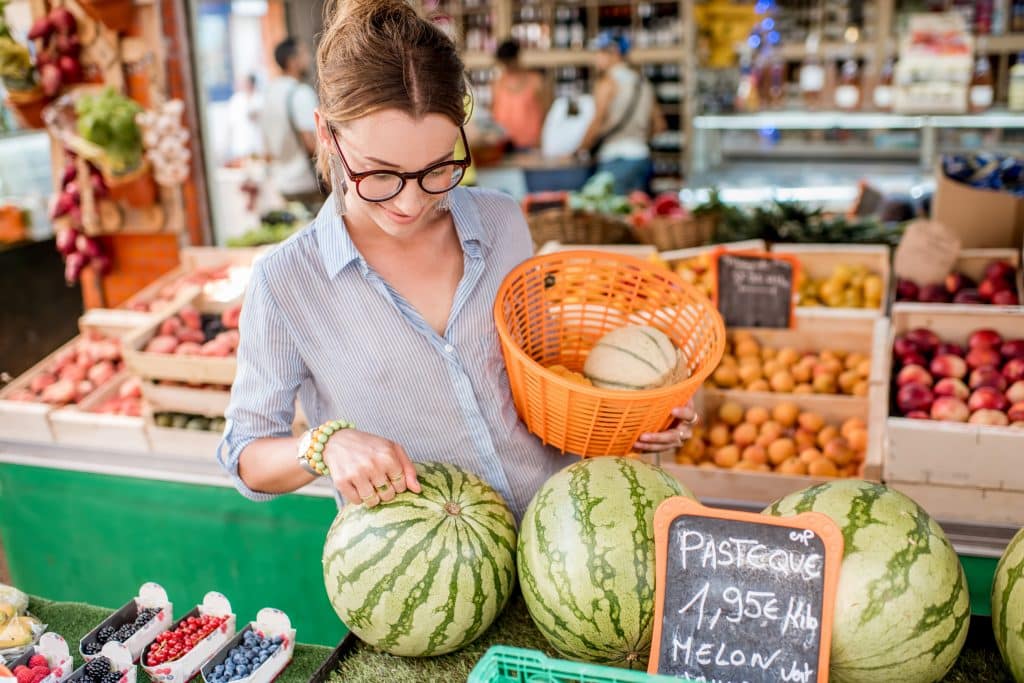
Tapping a watermelon can provide valuable insights into its internal quality. A ripe watermelon will produce a deep, hollow sound when tapped. This sound indicates that the watermelon is full of water and likely to be juicy and sweet. On the other hand, a flat or dull sound can be a sign that the watermelon is underripe or overripe, leading to a less enjoyable eating experience.
Mastering the art of the tap may take some practice, but it’s well worth the effort. The next time you’re at the store, don’t hesitate to tap a few watermelons and listen carefully. With time, you’ll become more adept at distinguishing the sounds that signify a ripe, juicy watermelon from those that don’t.
Weight And Density
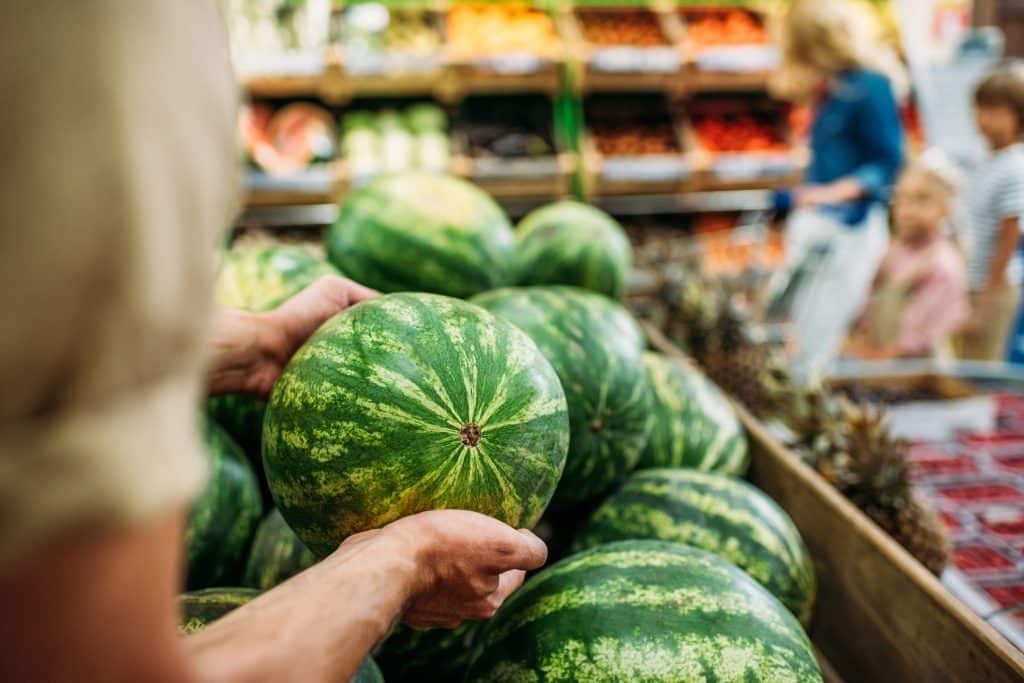
When you pick up a watermelon, it should feel heavy for its size. A heavy watermelon is usually a good indicator that it’s full of water, which means it’s likely to be juicy and sweet. The density of the watermelon can also provide clues about its quality. A dense watermelon will feel solid and heavy, indicating that it’s packed with water and natural sugars.
Don’t be shy about comparing different watermelons by lifting them. Even if two watermelons are the same size, the heavier one is generally the better choice. Weight and density are reliable indicators that can help you avoid the disappointment of cutting open a dry, tasteless watermelon.
The Sniff Test
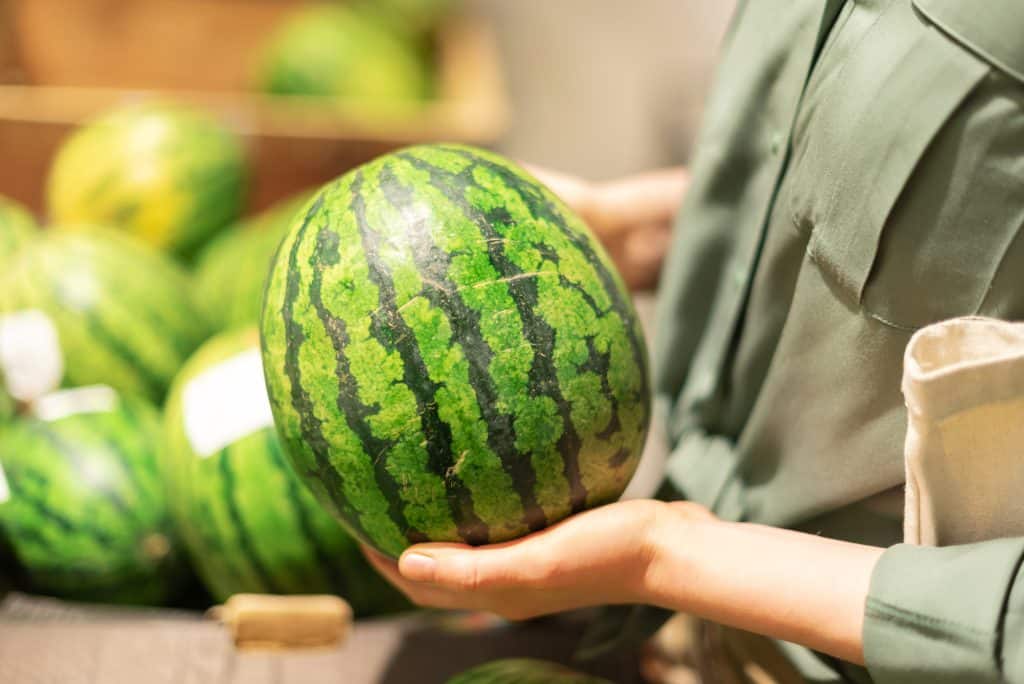
Smell is another powerful tool in your watermelon-choosing arsenal. A ripe watermelon will emit a sweet, slightly earthy aroma. This smell indicates that the sugars inside the watermelon have developed, promising a sweet and flavorful experience. If the watermelon has no smell or an off-putting odor, it’s best to pass it by.
The sniff test is especially useful when combined with other methods like tapping and visual inspection. If a watermelon passes all these tests, you can be fairly confident that you’re making a good choice. On the other hand, if the smell is off, even if the watermelon looks good and sounds right when tapped, it’s better to err on the side of caution and choose another one.
The Final Checklist
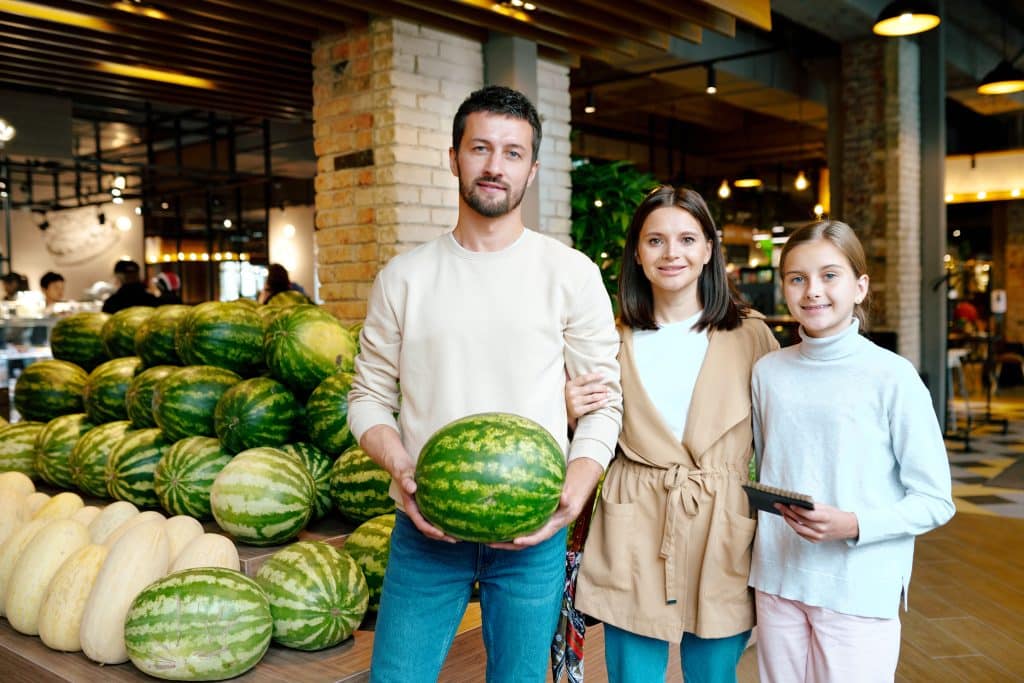
By now, you should have a comprehensive understanding of how to choose the perfect watermelon. To make your future watermelon-shopping trips even easier, consider creating a checklist that includes all the points discussed: type, source, seasonality, visual cues, tapping sound, weight, and smell. Having a checklist on hand can streamline the selection process and increase your chances of bringing home a winner.
In addition to the checklist, there are a few more tips that can enhance your watermelon experience. For instance, once you’ve made your selection, store the watermelon in a cool, dry place. If you’ve cut the watermelon but can’t finish it in one go, store the remaining pieces in an airtight container in the fridge to maintain its freshness and flavor.
Follow This Roadmap To Watermelon Bliss!
You’re now equipped with a wealth of knowledge to make your next watermelon purchase a smashing success. From understanding the different types and where to buy them to mastering the art of visual inspection, tapping, and sniff tests, you’re well on your way to becoming a watermelon connoisseur. So, the next time you find yourself in front of a pile of watermelons, you’ll know exactly what to do. Happy watermelon hunting, and may your summer be filled with the juiciest, sweetest watermelons ever!



